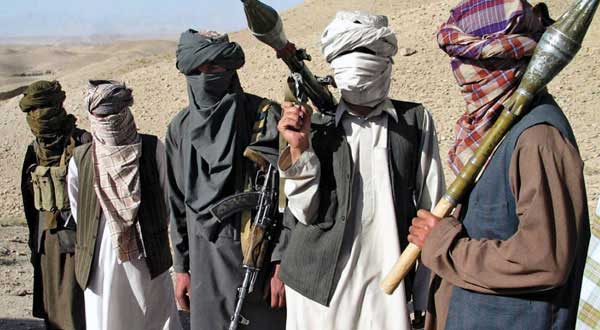There is one constant in Pakistani policy towards India for last 75 years and that is a firm belief that India cannot stay as one nation and will soon breakup into several small parts. In such a scenario, Pakistan will emerge as the biggest state in a Balkanized South Asia.
The recent epidemic of violence in India cannot be called a mere coincidence. Simple question to be asked is who benefits? Answer to this is that an economically weakened Pakistan is the beneficiary.
This was explicitly stated by Ayub Khan to President Kennedy of the US, as early as 1961. Ayub had confidently predicted break up of India. It is another matter that in less than 10 years’ time it was Pakistan that broke into two.
But despite this, the ISI (Inter Services Intelligence) agency of Pakistan has persisted in the efforts to stroke fires of separatism in India in this hope. India has paid back in the same coin and has been active in Pakistani internal politics with the aim of break up of Pakistan. A book ‘Spy Stories’ by Adrian Levy and Cathy Scott-Ckark has graphically chronicled these spy-wars.
The recent epidemic of violence in India cannot be called a mere coincidence. Simple question to be asked is who benefits? Answer to this is that an economically weakened Pakistan is the beneficiary. On the one hand it helps the Pakistani Army, the real rulers of that country, to ensure national unity by pointing at the plight of Muslims in India.
This is important as Pakistan is going through a very difficult time economically and there is political turbulence after the fall of Imran Khan government. Anti-Muslim violence in India and communal tensions is God sent for Pakistan in these turbulent times.
The current rash of sundry self-styled Sant-Mahant’s spewing venom and worse cannot be easily explained. Any one in public life knows that it is not easy to organize protest marches or meetings without money. Even a temporary ‘shamiyana’ costs lakhs of rupees. Where is all this money coming from? This is one question India’s investigating agencies ought to be asking. A guess is that much of the financial resources for this crusade must be coming from the ‘hawala’ route.
We all know how extensive is the crime network of Dawood Ibrahim. In the past as well Dawood gang has been using this channel to carry out terror attacks in India like the July 2006 train blasts in Mumbai. This time around it seems that the ISI-Dawood combine has found willing collaborators in these lumpen elements in Saffron, to call them ‘Sant’ or saints is height of hypocrisy. Luckily for us, most of these charlatans are small fries and not cult figures like Asaram or Ram-Rahim, both of whom are cooling their heels in prisons on charges of rape and murder.
To undertake meaningful economic recovery and bring it back on the track, internal peace is of paramount importance.
In the normal times, the Indian society is quite capable of taking care of these card-board sant-mahants. In any case their intemperate outbursts and bouts of anger are a sure path to hell. In Bhagwat Geeta chapter 2, verse 62, Lord Krishna tells Arjun how attachment and non-fulfillment of desire for worldly goods leads to anger. Anger then clouds one’s judgement and leads to sin and ultimately to hell.
The self-styled Mahants, who indulge in periodic outburst have ofcourse never heard of these admonishments by Lord Krishna. In any case most of these self-styled savior’s of faith have never read the fundamental tenets of Bhagwat Geeta or understood it.
But times are not normal and drastic action is needed to deal with these agent provocateurs working at instance of Pakistan or Dawood gang. The world is barely recovering from the economic devastation caused by Covid-19. There are vast pools of unemployed and frustrated youth waiting to explode in frustration. Even though India has managed the Covid 19 crisis reasonably well, its economy, like the rest of the world has suffered. To undertake meaningful economic recovery and bring it back on the track, internal peace is of paramount importance.
As if the economic crisis due to Covid-19 was not enough, the Russian invasion of Ukraine has thrown the world economic order into turmoil. Common citizens are facing the worst of fuel price rise. All of us have seen what happens when the prices go though the roof in otherwise peaceful country like Sri Lanka. If the Sri Lanka like unrest is to spread in India, it will further devastate the economy.
In this difficult situation India must tighten its internal security and deal with foreign sponsored agitations with an iron hand.
As a military historian one can see an uncanny resemblance of the current situation with that of exactly a century ago. In 1918-19, the world saw the Spanish flu epidemic and a World War. Today after a hundred years we have had a Covid-19 pandemic that is being followed by the Russian invasion of Ukraine. Like the first World War, currently the flames of war seem confined to Eastern Europe.
But it is anybody’s guess as to what will happen in future. Will China emulate Russia and invade Taiwan? Will Russia next target Maldova? Will civic unrest in Belorussia lead to Russia invading that country as well? All these are in realm of speculation but not impossible scenarios.
In this difficult situation India must tighten its internal security and deal with foreign sponsored agitations with an iron hand. The antics of faith-sellers must be nipped in bud as the country prepares to face the external threats and economic crisis.





